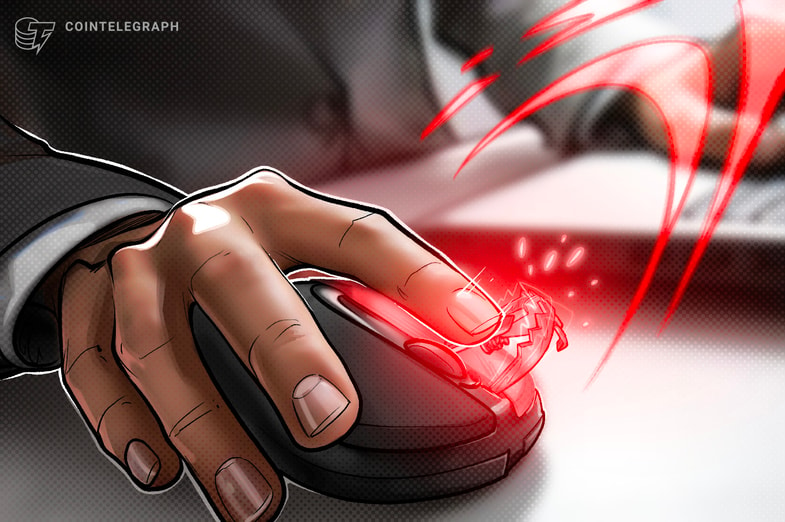Key takeaways
Clicking a phishing link can be risky, but taking immediate action can prevent serious damage. Disconnect from the internet right away to stop malware from communicating or spreading further.
Next, update your login credentials for all sensitive accounts using a safe, uncompromised device. Strengthen security by enabling 2FA.
Run a reputable antivirus scan to detect, remove and block any malicious files or software. Monitor your accounts for suspicious activity, enable alerts and contact your bank or exchange if you notice anything unusual.
Report phishing attempts to official agencies. Use the experience to enhance your online security with password managers, anti-phishing tools and regular cybersecurity awareness.
Clicking a phishing link can hand cybercriminals the keys to your financial life, professional network or personal identity. Sometimes it happens in an instant. The culprit might be an urgent email from your bank or a message that appears to come from your workplace. Scammers strike when your guard is down. One click, and you realize your action has put you at serious risk.
The minutes following an accidental click are extremely important. Your reaction can make the difference between a minor scare and a financial or data disaster. Instead of panicking, take quick action to contain the threat.
This article provides a five-step action plan to immediately limit unauthorized access and help you regain control. These are fast, definitive measures designed to prevent disaster.
Step 1: Disconnect immediately
If you click a phishing link, disconnect from the internet right away by turning off WiFi or mobile data. This helps prevent malware from communicating with external servers. Avoid further browsing or clicking anywhere on the suspicious page, as it could trigger additional security risks.
If you are using a work device, promptly notify your IT department so they can isolate the system, secure evidence and begin a security assessment. Acting quickly is crucial to protect your data, block unauthorized access and stop malware from spreading through your network or organization. Time is critical when responding to phishing incidents.
Step 2: Change compromised passwords
After addressing the initial threat, change your passwords immediately. Start by identifying which accounts may be at risk, especially those linked to email, banking, social media or cryptocurrency wallets connected to the affected device or phishing link. Use a secure, unaffected device to reset these passwords and make sure each one is strong and unique.
Whenever possible, enable two-factor authentication (2FA) to add an extra layer of security. This helps prevent unauthorized access even if your credentials were compromised. Acting quickly to update passwords reduces the attacker’s opportunity to exploit your accounts and helps you regain control of your digital identity.
Did you know? The term “phishing” was coined in the mid-1990s by hackers who “fished” for passwords and data from unsuspecting users.
Step 3: Run a full security scan
After securing your accounts, inspect your device for potential threats. Use trusted antivirus or anti-malware software to detect and remove any malicious files that may have been downloaded through the phishing link. On mobile devices, clear the cache, delete suspicious apps and review app permissions for any unauthorized changes.
Once your device is clean, update the operating system and browser to patch known vulnerabilities that attackers could exploit. Running a thorough scan not only removes existing threats but also strengthens your device’s overall security. Make sure that no malware remains on your device because it could jeopardize your data or accounts in the future.
Did you know? Despite spam filters and AI defenses, a significant number of phishing emails still slip through. Human error, such as clicking the wrong link, remains the biggest vulnerability in cybersecurity.
Step 4: Monitor accounts for suspicious activity
Even after securing your device, stay alert. Monitor all your online accounts for signs of unauthorized activity, such as unfamiliar logins, unexpected transactions or unusual messages. Cybercriminals may act immediately or wait before using stolen information. If you notice anything suspicious, contact your bank, email provider or cryptocurrency exchange right away to freeze accounts or reverse transactions.
To stay proactive, enable real-time alerts for account changes, password resets or withdrawals. Consistent monitoring helps you respond quickly if hackers gain access, reducing potential damage to your financial or digital accounts.
Did you know? Phishing is no longer confined to emails. Attackers now also use text messages (smishing), voice calls (vishing) and direct messages on social media to trick victims.
Step 5: Report and recover
After securing your devices and accounts, the final step is to report the phishing attempt to the appropriate authorities. If you are in the US, forward the email or message to the Internet Crime Complaint Center (IC3). In the UK, report phishing to Action Fraud, and in Scotland, to Police Scotland. In India, file your complaint with the Indian Computer Emergency Response Team (CERT-In). You can also share the suspicious link with Google Safe Browsing to help block similar threats.
If you accessed the link using a work account, promptly notify your IT support team. If your country does not have a dedicated online reporting system, file a report with your local police.
Turn the mistake into a lesson
While clicking a phishing link can be alarming, it can also be a valuable learning experience if you take the right lessons from it. In the face of adversity, stay composed, respond promptly and treat the incident as an opportunity to improve.
Once you have addressed the immediate threat, focus on safeguarding your accounts and devices. Strengthen your online security by using a reputable password manager, installing anti-phishing browser extensions and keeping your security software up to date.
To stay protected in the future, stay informed about new developments in cybersecurity. Even experienced users can make mistakes, so continuous learning and awareness are essential. Making cybersecurity a regular habit and staying vigilant will keep you protected.


